If you're new here, you may want to subscribe to my RSS feed. Thanks for visiting!
Author of Be Ready for Anything and Bloom Where You’re Planted online course
Are you sick of all the nasty chemicals in skin care products? Here’s how to make a homemade moisturizer you could actually eat. (And it’s great for dry winter skin!)
Winter is tough on your skin.
The drying effects of heating systems can cause dehydration and make your skin dull-looking very quickly. Then there is the wind, snow, and rain. It feels like a constant onslaught.
There are thousands of skin care products on the market, and the vast majority of them are filled with chemicals that have been linked to hormonal disruption, organ toxicity, and cancer. (You can learn more here.)
As well, during a survival situation, dry cracked skin can actually be life-threatening. If you are in a situation in which medical care is scarce, cleanliness is hard to come by, and antibiotics are unavailable, it’s even more essential than every to keep your skin healthy. (More on the importance of moisturizer to survival here.)
My solution to ALL of these problems is to make my own products. And as a bonus, homemade chemical-free products are far less expensive store-bought counterparts.
The Ingredients
You only need three ingredients that you can purchase from Amazon in bulk. These amounts will be enough to keep you in skin cream for up to a year.
- Unrefined shea butter
- Organic cocoa butter
- Coconut oil (Get the big container. It has a billion other uses and won’t go bad.)
I don’t buy the ingredients pressed into blocks or pellets. I prefer them to have been handled and heated as little as possible before they come to me. However, if these are all that you have available, they’ll still be a far cry better than the products you get off the shelf.
Always do a little test by rubbing a small amount of each onto your forearm. Most people aren’t allergic to these ingredients, but you should check for sensitivity before you slather onto your entire body. As well, check the texture so that you can strike the proper balance when making your products. For example, some people find that the cocoa butter is a little too heavy or greasy, so they reduce the amount and increase the shea butter content.
Note: when you whip the cream, it will increase in volume quite substantially. Don’t worry if you end up with far more than you expected. It will keep well in a ziplock bag or jar in the fridge.
How to make your homemade skin cream.
Wash a couple of jam jars or other containers and dry them thoroughly. You can pop them in the oven on low to get rid of every trace of water. Make sure your containers are completely dry.
Gather your ingredients.
Melt everything together.
Put equal parts of shea butter and cocoa butter into a bowl with half that amount of coconut oil. For example: 1 cup of cocoa butter, 1 cup of shea butter and half a cup of coconut oil. Scale up or down based on your needs.
Melt in the microwave on low or over a pan of boiling water. You don’t need to get it boiling hot. Just warm it enough that it reaches liquid form and can be easily mixed.
Thoroughly mix the product.
Using a whisk or a food processor, thoroughly incorporate the melted ingredients. I like to use the food processor to get a smoother product.
Unrefined products can sometimes contain tiny solids that will feel a teeny bit gritty upon application. It will absorb into your skin but if the texture will bother you, strain the melted product through muslin or a flour sack towel.
Put your product aside to cool at room temperature. If you put it in the fridge to cool, your result won’t be as creamy and smooth as it will if you just leave it on the counter for a few hours. If you used a food processor, don’t worry about washing it. You’re going to use it again, and you want it to be totally dry.
Now, whip the product.
When it is completely cooled, it will be an unappealing yellow color and kind of a gooey texture. Don’t worry. We’re not done yet. Scoop it back into the food processor and whip the melted mixture until it’s light and creamy in texture. You can do this manually with a balloon whisk, in a food processor, or using a stick (immersion) blender.
If you want to add an essential oil for fragrance, this is when you do it. I rarely add fragrance to this product because we use it on our faces for heavy moisturizing.
DO NOT use a regular blender for this. The product sticks to the sides, and there’s too much space to get a good whip.
Watch as the yellow goo turns into the gorgeous, luxurious cream.
That’s it!
Scoop the product into your perfectly dry containers and store the cream in a cool dark place. How simple is that?
Some ways to use the moisturizing cream:
- Keep it in the fridge and use the block as a moisturizing bar that melts as it touches your skin. (This is especially refreshing in the summer.)
- Keep it on your counter. At room temperature, it will harden slightly but will soften as soon as you begin rubbing it on your skin.
- Rub it through your hair once a week as an intensive conditioner, leaving it for a couple of hours before washing it out.
- Put it into small pots and use it as a lip balm.
- When you are finished making your skin soft and supple, blot the excess on your hands onto your hair. This is ideal for controlling flyaway frizz or curly hair. There’s not enough on your hands to weigh down your hair, and you’ll love the shine.
- Apply a thick layer to dry, cracked heels and feet. Put on heavy socks and go to bed. After a few days of this, your feet should be in much better condition.
Regardless of how you use it, a homemade moisturizer made from ingredients that you could literally eat beats a chemical-laden store bought product every time.

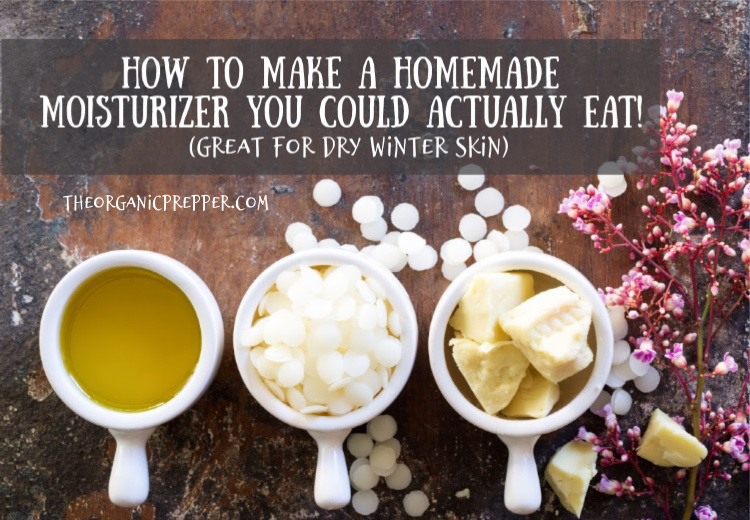
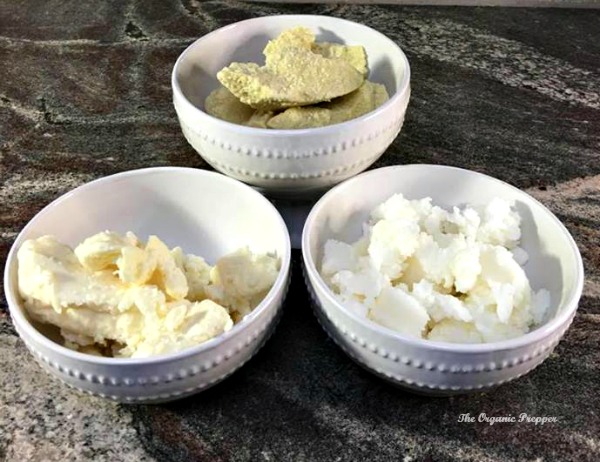
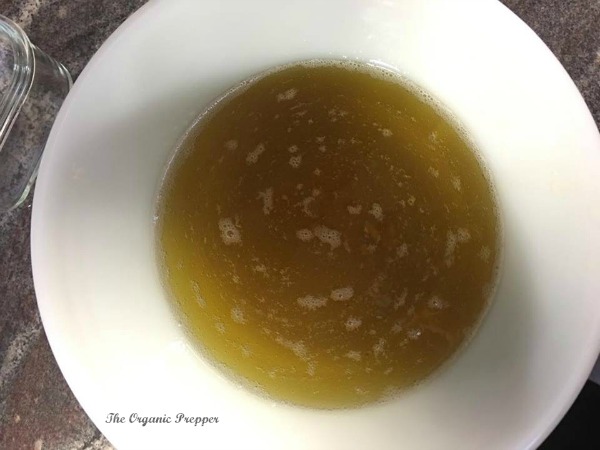
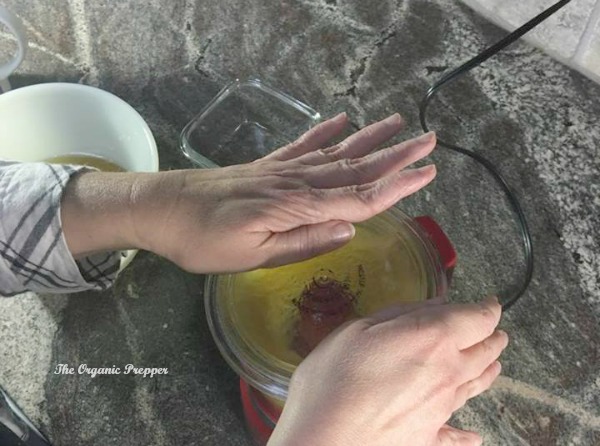
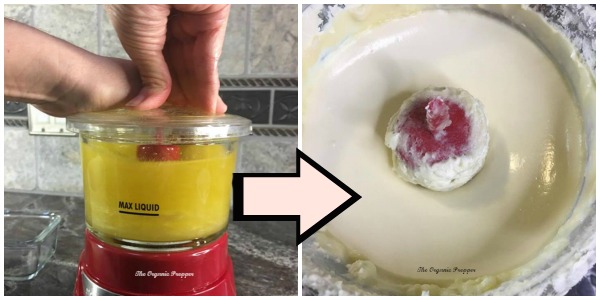
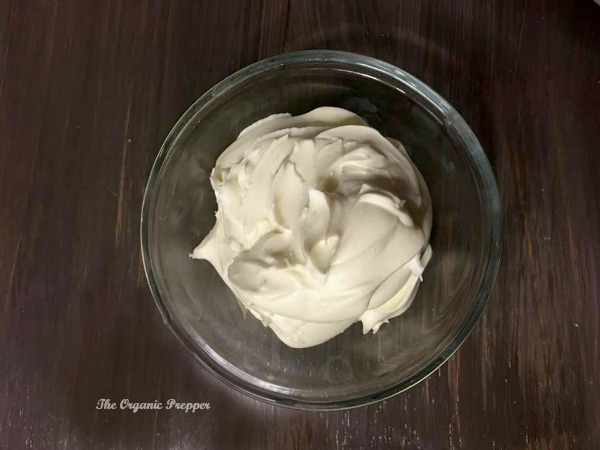














One Response
Thanks for this recipe–I’m going to make it as soon as I get more cocoa butter!